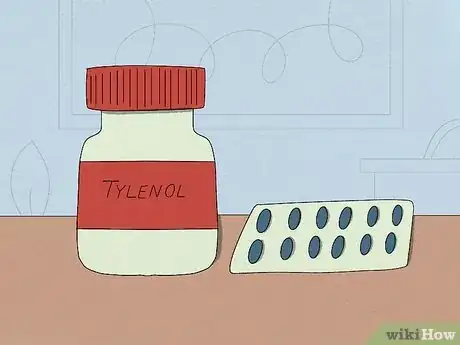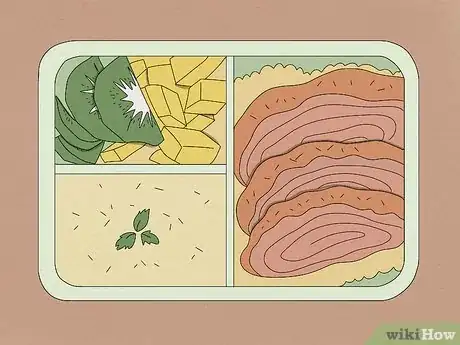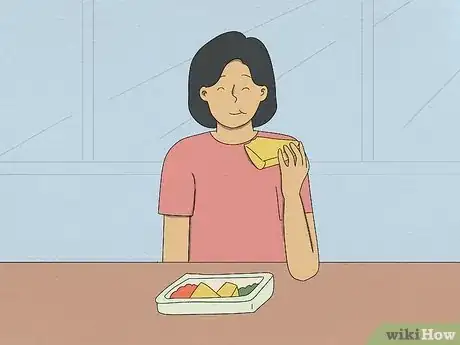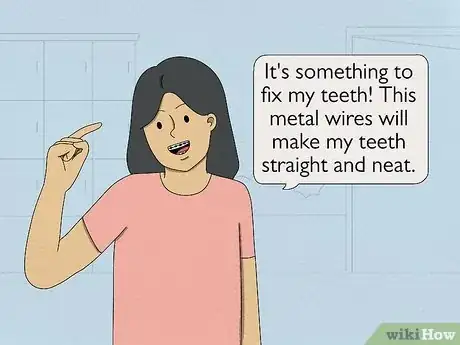This article was co-authored by Shayne Guffey, DMD. Dr. Shayne Guffey, DMD is a Dentist and the owner of Mountain View Family Dental in Mesa, Arizona. With over 20 years of experience, Dr. Guffey specializes in family dentistry and cosmetic dentistry. He earned his Doctor of Dental Medicine (DDM) from Oregon Health & Science University. Additionally, he’s a professional member of the Academy of General Dentistry and the Dental Organization for Conscious Sedation.
There are 13 references cited in this article, which can be found at the bottom of the page.
This article has been viewed 7,499 times.
Braces- they're notorious for being uncomfortable, painful, and unstylish. Over 4 million people in the U.S. get braces due to teeth misalignment. [1] X Research source Getting braces is a relatively common thing, but orthodontists have been unable to make braces comfortable, stylish, or less painful ever since braces were first invented in 1819.[2] X Research source A large concern for teenagers and tweens with braces is school. How do you deal with this painful, uncomfortable, and unstylish dental appliance in school? This article will tell you how.
Steps
Manage the pain of having braces.
-
Braces can be notoriously painful for your gums and teeth. Since braces pull teeth together to close gaps and shift your teeth to the right positions, this can cause pain in your gums. Bring pain medication to school if you have pain while having braces. Tylenol and Advil are the most popular pain medications for relieving braces pain. Tylenol contains acetaminophen, and Advil contains ibuprofen, both of which can relieve pain. [3] X Research source
- Be sure to follow proper protocol for bringing the medicine to school. While some schools will allow you to carry it with you, some schools may require it to be stored at the nurse's office, and some may require a doctor's note. Failure to follow proper protocol will likely result in you not being able to have the medicine at school.
- You could also use a small ice pack, but heading to the nurse's office and/or carrying one around with you isn't always very convenient.
- Don't chew on stationery like pens, pencils, marker/pen caps, and erasers to relieve the pain. This will damage the supplies and ruin your teeth.
Deal with uncomfortable braces.
-
Braces have many parts to them that can rub or scratch against your mouth. This causes your mouth to hurt, like if someone scratched it very hard or if someone poked your lip with a pin. The wires and brackets can cause you to develop canker sores and cuts all over your mouth.
- Try to bend back braces wire that is too long. Use a pencil's eraser and bend the excess wire back onto your teeth.
- Put orthodontic wax onto the painful parts. Your orthodontist may have supplied you with some free wax. If you ran out or don't have any, buy orthodontic wax at a pharmacy or department store. Get a piece of wax, roll it into a ball, and push it on the sharp part of the braces. [4] X Research source
- Buy silicone wax. Silicone wax is resistant to water and saliva, so it doesn't crumble and fall off that easily compared to normal orthodontic wax. Take apart the packaging, wait for your mouth to produce more saliva, pinch and stick the adhesive part of the silicone wax onto the sharp part of your braces, and leave it there. It will stick better compared to normal wax.
- Ask your orthodontist to fix broken brackets and wires that are too long. These can cause bad injuries to your mouth, so you should immediately schedule an appointment with your orthodontist if any of this occurs. Having broken braces also lengthens your treatment time, which is not something you would want if you hate braces or if you want your teeth to be straightened quicker.
- If you have a cut in your mouth, see this article. If you have a canker sore caused by rubbing wires from braces, see this article.
Eat easy to chew foods during breaks and lunch.
-
Eating hard or sticky foods is probably difficult for you if you have new or tightened braces. Chewing can cause pain on your gums. During lunch and snack time, eat softer foods instead of hard candy or snacks. [5] X Research source
- Snacks that you shouldn't eat during breaks include chips, whole fruits, granola bars, taffy, crackers, hard cookies, lollipops, jawbreakers, candy bars, and other hard or sticky foods.
- Snacks that you can eat during breaks include cut-up fruits, soft fruits (like kiwis, bananas, oranges, peaches, mangoes, or dragonfruit), yogurt, a bottle of milk, soft bread, soft cookies, and other soft, easy to swallow foods.
- Meals that you shouldn't eat during lunch include taco shells, hard bread, hard sandwiches, hard bread crusts, pizza, grilled cheese sandwiches, and other hard foods.
- Meals that you can eat during lunch include noodles (udon, ramen, mac and cheese, spaghetti, chicken alfredo, noodle soup, pad thai, chow mein, etc.), soft rice, soups, cereal, soft sandwiches, soft bread, tender meat with no bones, and other soft, easy to swallow foods.
Deal with not getting enough time to eat at lunch.
-
It can be challenging to eat with braces. If you have braces, you may be self-conscious [6] X Research source about eating, since you always get bits of food stuck between the brackets. You might have a hard time eating if your mouth is sore and painful. Additionally, the wire, brackets, and other hardware of your braces can rub against your gums and lips more, making it harder to eat. Luckily, there are many ways to solve this.
- Eat softer foods or foods cut up into pieces. Cut up your noodles, sandwich, meat, vegetables, or fruit into pieces. As explained in the previous section, this makes it easier to eat since your mouth won't have to work as much with chewing, making your mouth less painful.
- Drink a lot of liquids while eating. This reduces your chewing time and helps you swallow larger pieces of food. Don't completely swallow without chewing though- this can lead to choking. Chew a few times into a few pieces, drink some water with the food, and swallow.
- Pack a smaller lunch. If you still eat very slowly, you may have to pack a smaller lunch. If lunch is 20 minutes long, you may need 30, 40, or even 60 minutes to finish lunch. You'll have to pack half as much as your regular lunch. You can reduce your hunger after lunch by eating snacks like fruit and bread after school.
Learn how to take care of your braces during school.
-
It can be difficult managing braces during school. The long classes and the short breaks can make it hard for you to clean your teeth and your braces. You can solve this by bringing a travel-sized kit to the bathroom after lunch to clean your teeth. [7] X Research source
- Your orthodontist may have provided you with a travel-sized kit for cleaning your braces.
- Put a travel-sized toothbrush, some toothpicks, floss, a container of toothpaste, some pain medication, a pocket mirror (to check for any food particles left in your teeth), a mini bottle of mouthwash, orthodontic wax, small cups to rinse out your mouth, and some napkins in your tooth hygiene kit.
- If you can't brush your teeth (if you don't have time between lunch and other classes), rinse out your mouth with mouthwash and water. It's best to use floss made for braces to floss your teeth afterwards.
Take care of other parts of your braces.
-
Some people need additional parts added on to their braces. Some of these pieces include rubber bands, springs, power chains, and orthodontic headgear. [8] X Research source All of these help fix your teeth and make them straighter in addition to normal braces. If you forgot how to take care of these parts of your braces, don't worry! It's still a pretty simple process.
- For people with rubber bands, take the bands off before every meal and put new ones on after every meal. So, in addition to cleaning your braces, put new rubber bands onto your braces. Check here to learn how to connect a rubber band to your braces. Some people had rubber bands with their expanders, so when they got braces, they didn't need to get rubber bands anymore. This is why some people don't have rubber bands on their braces.
- For people with springs, you do pretty much the same thing for people with no extra parts on their braces. You might have to put orthodontic wax onto your springs though, since they are likely to scratch your lips and mouth. You shouldn't take them off either, since they create spaces for other teeth. Try not to fidget with your springs during class and fidget with a pen instead.
- For people with power chains, do the same thing for people with no power chains on their braces. You might have to brush more carefully and use floss to get food off of the elastic chain, so take more time in keeping up with your dental hygiene.
- For people with orthodontic headgear, take the headgear off while eating. Talk to your orthodontist on how to put on and take off the headgear, since there are multiple types of headgear. You can still drink while wearing the headgear though; just use a straw. You may have to sit out during PE or sports clubs if you play contact sports (American football, soccer, hockey, wrestling, boxing) [9] X Research source
Cope with being self-conscious.
-
Many people with braces are self-conscious, so don't worry! Some people might worry that they are ugly with braces, especially if they have other "unattractive" accessories, like glasses and acne. Others are scared that someone will spot food stuck in their braces. Braces might look ugly on you and your teeth, but they are worth it! After you get your braces off, your teeth will look better, making you even more good-looking/attractive/beautiful!
- Repeat to yourself that you are beautiful the way you are!
- If you are worried about food particles stuck in your teeth, use your pocket mirror from your tooth hygiene kit to secretly check for stuck food particles. You can then excuse yourself to the bathroom, citing "feminine hygiene", "stomach issues", or "having a lot to drink". You could also directly say that you need to clean your teeth, but most people would be pretty embarrassed about their bad tooth hygiene.
- Ignore light teasing, like if someone says, "Those don't look good on you" or "Woah, check those metal weird things in their mouth!". If it gets to insults, like "You are ugly as a pig." or "You look like a weirdo", report it to a trusted adult.
Cope with the attention you get with braces.
-
Some kids might not have seen braces or other orthodontic appliances, so they may stare at your teeth. When you talk or smile, some kids might keep looking at you and ask, "What is that?" or similar questions. Others might be attracted to the colors of your braces' brackets if you chose a bright color like red, green, yellow, or light blue.
- To combat this, explain what it is. Say something like, "It's something to fix my teeth! This metal wires will make my teeth straight and neat." or "These metal brackets and wires, called braces, shift my teeth to make them aligned."
- If it gets to be too much, you could just ignore the people who ask multiple times. They will likely soon realize that pestering you with questions about braces is wasting their time (since you're not going to answer/pay attention to them) and leave.
You Might Also Like
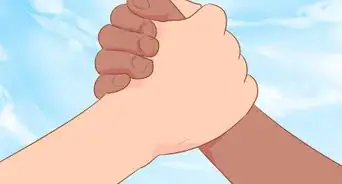

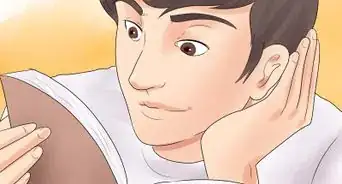





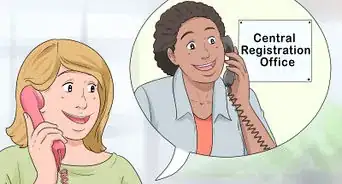
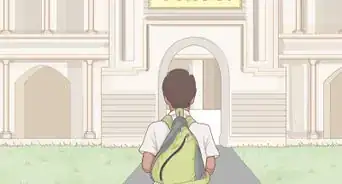

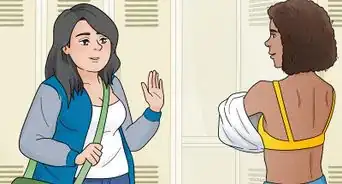


References
- ↑ https://www.humana.com/dental-insurance/dental-resources/dental-braces#:~:text=For%20decades%2C%20dental%20braces%20have,of%20these%20individuals%20are%20adults.&text=If%20you%20have%20a%20misaligned,braces%20are%20right%20for%20you.
- ↑ https://www.thurmanortho.com/the-interesting-history-of-braces/
- ↑ https://www.absolutedental.com/blog/home-remedies-to-soothe-pain-from-braces/
- ↑ https://www.splashorthodontics.co.uk/how-to-use-wax-for-your-braces/
- ↑ https://hansenortho.com/general/how-to-eat-with-braces/
- ↑ https://together.dental/blog/busting-the-myths-about-braces/
- ↑ https://yourazbraces.com/how-to-clean-braces-at-school/
- ↑ https://patients.dentistry.utoronto.ca/braces-parts-and-use#:~:text=These%20auxiliary%20components%20include%20a,such%20as%20rotating%20a%20tooth.
- ↑ https://www.healthline.com/health/dental-and-oral-health/headgear#dos-and-donts
- ↑ https://www.healthline.com/health/dental-and-oral-health/braces-rubber-bands#types
- ↑ https://www.adventureortho.com/why-do-some-patients-need-braces-with-springs/
- ↑ https://www.colgate.com/en-us/oral-health/adult-orthodontics/what-are-power-chain-braces
- ↑ https://www.healthline.com/health/dental-and-oral-health/headgear#types
About This Article

